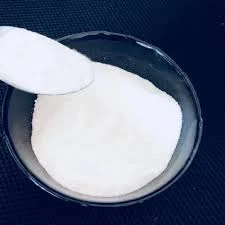
Abe . 03, 2024 15:40 Back to list
hpmc cellulose
HPMC Cellulose A Multifaceted Polymer in Modern Applications
Hydroxypropyl Methylcellulose (HPMC) is a cellulose-derived polymer that has gained significant attention in various fields, including the pharmaceutical, food, cosmetic, and construction industries. This non-ionic, water-soluble polymer is valued for its unique properties, such as its ability to form gels, stabilize emulsions, and enhance texture. As more industries seek sustainable and effective solutions, HPMC cellulose emerges as a versatile component that meets diverse needs.
One of the primary advantages of HPMC cellulose is its exceptional solubility. Unlike some cellulose derivatives, HPMC can dissolve in both hot and cold water, making it a convenient thickening and binding agent. This property is particularly beneficial in the pharmaceutical industry, where HPMC is used as an excipient in drug formulations. It aids in achieving controlled release profiles, allowing for sustained medication delivery. Moreover, its compatibility with a wide range of active ingredients ensures that it can be incorporated into various dosage forms, including tablets, capsules, and topical gels.
HPMC Cellulose A Multifaceted Polymer in Modern Applications
The cosmetic and personal care sector also benefits tremendously from HPMC’s unique properties. HPMC is frequently used in the formulation of shampoos, conditioners, lotions, and creams due to its excellent film-forming abilities. It provides a smooth texture and enhances the application experience while contributing to the product's stability. Furthermore, HPMC acts as a suspending agent in formulations that contain insoluble particles, ensuring uniform distribution and consistency throughout the product's lifespan.
hpmc cellulose

In recent years, the construction industry has recognized the advantages of HPMC, especially in tile adhesives, plasters, and mortar. Its water-retention properties prolong workability, allowing contractors to work efficiently without the material drying too quickly. Moreover, HPMC enhances adhesion and improves the flexibility of construction materials, making joints and surfaces more durable and resistant to cracking. As the construction industry increasingly focuses on sustainability, HPMC is becoming a preferred choice for eco-friendly building materials.
As with any polymer, it’s essential to consider the environmental impact of HPMC cellulose. While sourced from natural cellulose, its production involves chemical processes that can raise concerns regarding sustainability. However, many manufacturers are now investing in greener production methodologies and sourcing practices, emphasizing the importance of biobased materials. Moreover, HPMC is biodegradable, which is a significant advantage as industries push toward eco-friendly alternatives.
Finally, ongoing research aims to explore new applications for HPMC cellulose in biomedicine, such as tissue engineering and drug delivery systems. With its biocompatibility and regulatory approval in various regions, HPMC could play a crucial role in developing innovative medical solutions.
In conclusion, Hydroxypropyl Methylcellulose (HPMC) is a multifunctional polymer with wide-ranging applications across several industries. Its unique properties, such as water solubility, thickening capabilities, and film-forming abilities, make it invaluable in pharmaceuticals, food, cosmetics, and construction. As industries continue to seek sustainable and efficient solutions, HPMC cellulose stands out as a promising material, paving the way for future innovations and applications. Its versatility and adaptability ensure that it will remain a key player in the polymer landscape for years to come.
-
Versatile Hpmc Uses in Different Industries
NewsJun.19,2025
-
Redispersible Powder's Role in Enhancing Durability of Construction Products
NewsJun.19,2025
-
Hydroxyethyl Cellulose Applications Driving Green Industrial Processes
NewsJun.19,2025
-
Exploring Different Redispersible Polymer Powder
NewsJun.19,2025
-
Choosing the Right Mortar Bonding Agent
NewsJun.19,2025
-
Applications and Significance of China Hpmc in Modern Industries
NewsJun.19,2025







